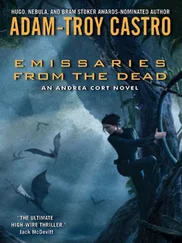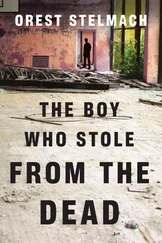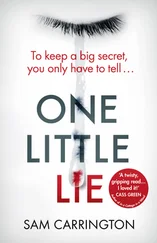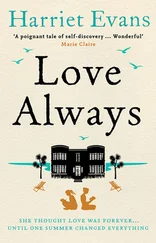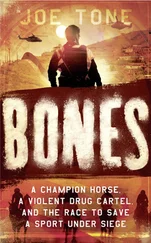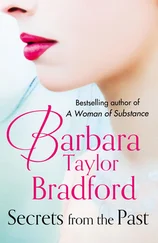For several years, my participation at the clinic was deeply satisfying. Eventually, though, I felt that I'd come to a standstill. My drawing skills couldn't keep up with my advancement as an anatomist: I was now at the point where I could see things that I couldn't draw. I simply couldn't make my hands reproduce on paper what I could perceive on the cadaver specimen-but my sculpting skills, I thought, were somewhat better. So, almost on a whim, I decided to create three-dimensional wax sculptures to portray the anatomical details I knew were there. Ironically, I'd always enjoyed sculpture more than work in two dimensions; but, until now, I'd had no outlet for this skill.
But when I approached Dr. Hughston, full of enthusiasm for my new idea, I was a bit taken aback by his response. “Sculptures? Clay models? We're not running an art gallery here, Emily. This is a clinic, in case you've forgotten.”
Eventually, I won Dr. Hughston's permission to work on the sculptures in the lab-but on my own time. All of a sudden, I was leading a double life. Every day, I would put in my usual full day's work producing drawings. Every evening, I would labor for hours sculpting life-sized clay models of knees in various stages of dissection, going far past the usual details portrayed in medical textbooks to reveal the pioneering discoveries that Dr. Hughston and his colleagues had made. His anatomical research revealed intricate fibers in the knee, shoulder, and ankle that had never before been shown by medical illustrators-until now.
To ensure accuracy, I brought specimens of fresh amputations right into my art studio. With my left hand, I felt my way along the joint, sometimes staring at the structures, sometimes closing my eyes and trying to send some secret code to my brain. I concentrated my entire being on what my hand was feeling-the contours of the knee, its bumps and curves, the spots where it was soft and spongy, the places where it was hard and smooth. Then, with my right hand, I rendered what I felt into the soft, oily clay. Although I could never have completed this project without a detailed knowledge of anatomy, working on this sculpture was a true leap into the unknown for me, combining science, art, and intuition in my first attempt to make a model come alive.
When my first sculpture was finished, I couldn't wait to show it to Dr. Hughston. He was more taciturn than usual as I ushered him into my studio. But when I lifted the soft cloth to uncover my wax model of a human knee, he was dumbfounded. Pioneer that he was, he saw the possibilities at once.
“Well,” he said after a long pause, in which I eagerly sought to read his blank expression. “Looks like I was wrong. We sure can make use of this.”
With Dr. Hughston's enthusiastic support, I went on to create over two dozen wax models of knees, shoulders, and ankles, pictures of which are still in use today. My work set a new international standard for medical education, creating a reputation for me as well as for the clinic. Yet though I seemed to be at the top of my profession, I realized that I had never really become the scientist I had always wanted to be. I had loved making drawings and sculptures-but they were always in service of a doctor or surgeon's work. I wanted a chance to do my own work with the human body, to take the lead in research and investigation instead of forever following two steps behind.
Medical illustration seemed to be running out of challenges-but I was still intrigued by the prospect of learning how to do a facial reconstruction for the West Point murder case. So off I went to Betty Pat's weeklong seminar in Norman, Oklahoma -where I was immediately sucked into the fascination of forensic work.
We started with the principles behind the different facial tissue depths. Think of a human face-what determines its shapes and contours? Most of it, of course, is bone structure. But the differing soft tissues are what turn the skull into a unique face that we recognize as male or female, Black or White, old or young. Scientists have developed a complex series of mathematical formulas giving the basic information on how sex, race, and other factors help to create different-shaped skulls and different patterns of tissue depth and shape.
To start a sculpture, then, we learned how to use these formulas to cut small erasers into different lengths and glue them on to the skull, to approximate the skin depths at various key points. Then we learned how to “connect the dots” by covering the erasers with clay, building up the contours that mimicked a real human face.
This would be challenging enough if our only goal were to produce a lifelike image. But ultimately, we wanted to create a face that resembled a specific person-a person whom we had never seen. Somehow we had to envision the victim's face and re-create something close to it, so that someone who had known this person could recognize him or her and come forward with a name.
During Betty Pat's weeklong class, I listened in awe to more stories of my teacher's most interesting cases. Then, at night, she and the instructors in the composite drawing class-conducted right next door to our reconstruction class-would discuss the profession of forensic art. As far as I could see, medical and forensic art were fairly similar. The primary difference seemed to be in the payoff. As a medical illustrator, I felt a certain satisfaction in a job well done and the knowledge that I was helping to teach anatomy and surgery to physicians. But that pleasure paled beside the thrill of being part of a team that solved murder mysteries and helped bring killers to justice.
Back I went to the Hughston Clinic, totally hooked on facial reconstruction. Although I was still nervous about doing the sculpture that Brian's colleagues had requested, I was now eager to try. However, the skills that had seemed so temptingly within my reach in Betty Pat's class appeared maddeningly elusive now. Like so many people, I initially thought that facial reconstruction could be reduced to a formula or recipe. If you followed the recipe, you would get a good result. Boy, was I wrong! Sure, you had to know the basics, but then there was all kinds of room for judgment-and for error.
Good student that I was, I followed the recipe I'd learned from Betty Pat. I checked out the formula for a White male, cut the appropriate markers, and glued them on to the skull. Then, to the best of my ability, I covered everything with clay, sculpting eyelids, mouth, and nose to correspond to the bony structure of the underlying bones and teeth. The final result did somewhat resemble a man's face, but to me it was an extreme caricature. The eyes were buggy, the mouth looked like it belonged on a puppet, and I didn't yet understand how important the neck was to make a person look “real.”
None of the cops had any evidence of individualizing details that might make this man's face unique. Did he have a moustache? A beard? Did he wear eyeglasses? Was he bald? Nobody knew-and that made it more difficult.
Although the police were relatively happy with my work, I was not. My frustration led me to what turned out to be a groundbreaking idea. Before I'd left for Betty Pat's class, I'd been working on new computer graphic techniques for demonstrating surgical procedures. I now had the idea of using computer graphics to produce what I called a “postmortem lineup.” By using the computer to apply facial hair, eyeglasses, and several different hairstyles to a single clay sculpture, I gave a range of different looks to that same face.
The completed facial reconstruction might not have been a striking success, but the first-time use of a computer-enhanced postmortem lineup sent a sensational wave through the law enforcement community. When we publicized the case in the Columbus newspaper, trying to identify the victim, the reporter was more astounded with the computer enhancements and variations than with the actual case. Forensic artists across the country quickly adopted my technique for computer-enhanced facial reconstruction, and, with some modifications, it is still in use today. Although my initial foray into the field never produced a victim ID, it seemed I had made a contribution nonetheless.
Читать дальше

